
I’m way behind on writing this post, but not having my computer for 44 days really slowed things down. Anyway, just wanted to share some highlights from two cool Swiss cultural things that I had the pleasure to partake in recently.
Brunch on Swiss National Day
The first was having brunch on a farm on 1 August, or Swiss National Day. Every year, farms all across the country open their doors for healthy, hearty, and — most importantly — locally sourced meals. Out of the thousands listed on this website, I chose the one that was closest to Geneva, a farm in the neighboring canton of Vaud.
On 1 August, friend E and I set out early from Geneva, taking a train to Lausanne, then a tram, and finally a bus to the farm, which was called Ferme la Coulette. In addition to being a farm, it was also a local composting center, situated in the sparse, sprawling countryside. I had made a reservation over email; they checked our names against a list and gave us wristbands. The cost of bottomless brunch was 35 francs, payable by cash or the Twint app upon arrival.
The farm itself was not enormous. Near the entrance was the drinks tent, with coffee, tea, and juices (the coffee ran out quickly). A few feet away was a small makeshift petting zoo, with a couple of goats for the kids.


There were two stations dedicated to food. One was a self-serve line for fruits, bread, pastries, and cheeses. There were flies crawling over some of the entries, but no one seemed to be fazed by this — I guess because it was a farm?
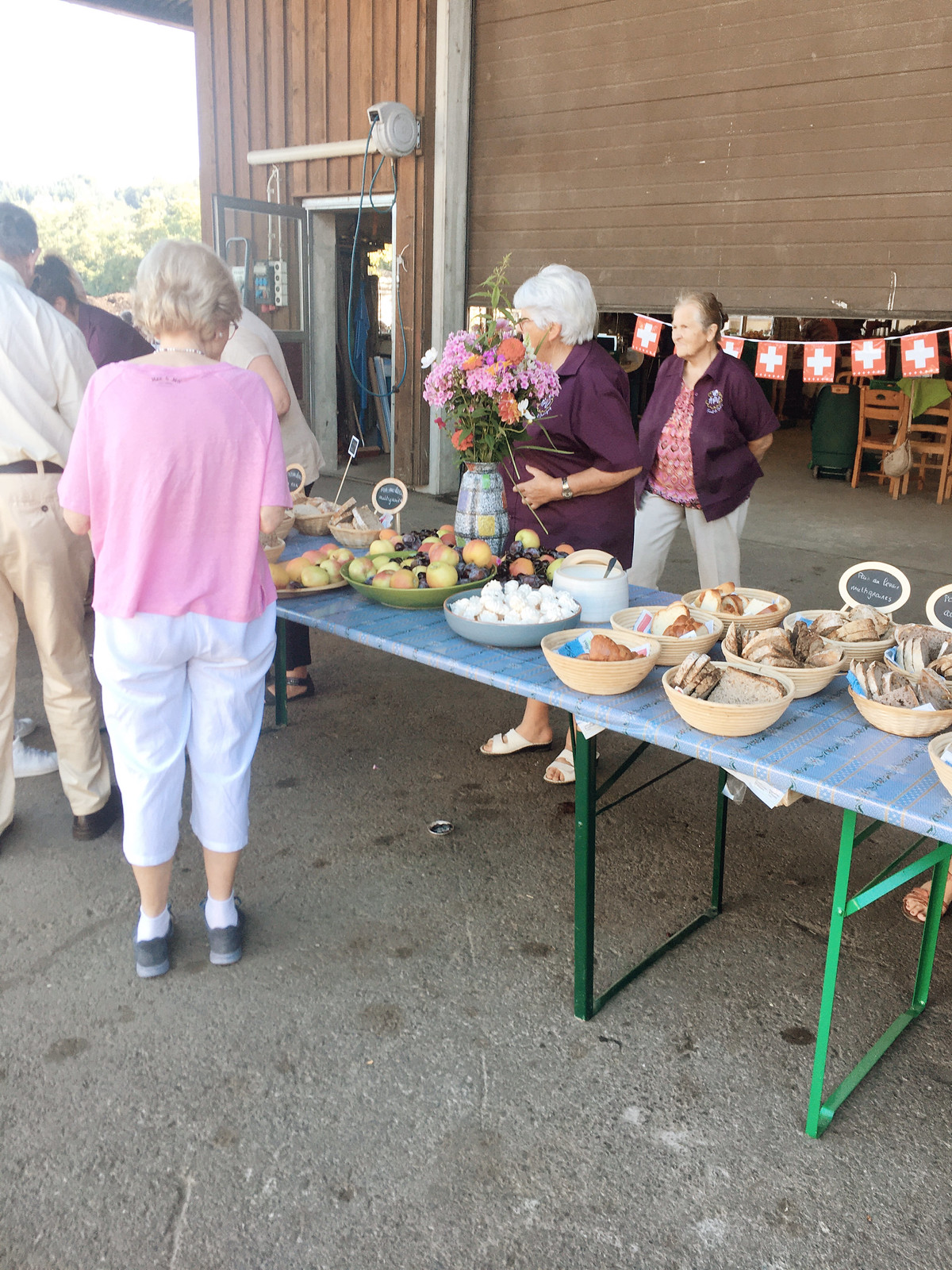
The other station was hot food cooked on the spot. They had sausages, rosti (fried potato pancakes), and sunny side up eggs. It was very satisfying watching one of the cooks flip and turn the rosti cakes on the grill as they sizzled and turned brown. I loved the eggs and rosti and went back for seconds.

I had been slightly worried that as a non-meat eater, I might not have had many options. But it was the contrary: aside from the sausages, pretty much everything else was vegetarian.
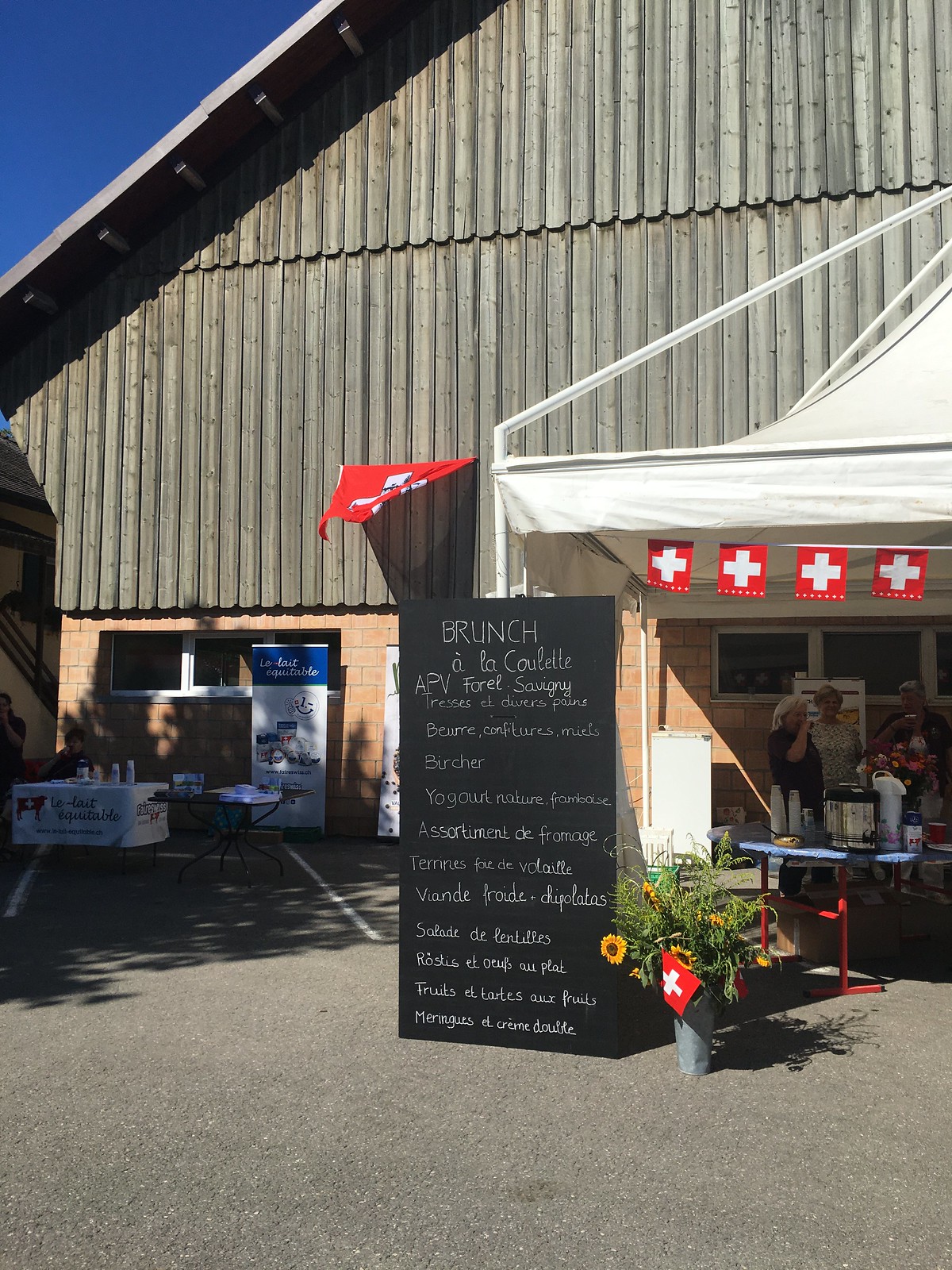
We ate at one of many long, long communal tables by the barn. By my estimates, there must have been at least 200 people at brunch, almost all of them local; the vast majority of the cars outside had Vaud license plates. There were tons of families, kids, babies, grandparents, and dogs. Everyone was just so chill and calm and happy and enjoying their meals in the sun; it was lovely being a part of it all.

After brunch, E and I walked around the barn to take a look at the animals. There were a ton of cows; the adults were in this sort of enclosure, and the babies were kept in little individual pens to allow them to grow peacefully during their first few weeks of life. Those pens were absolutely swarming with flies, which was a bit disconcerting. Surely it has to bother them at least a little?

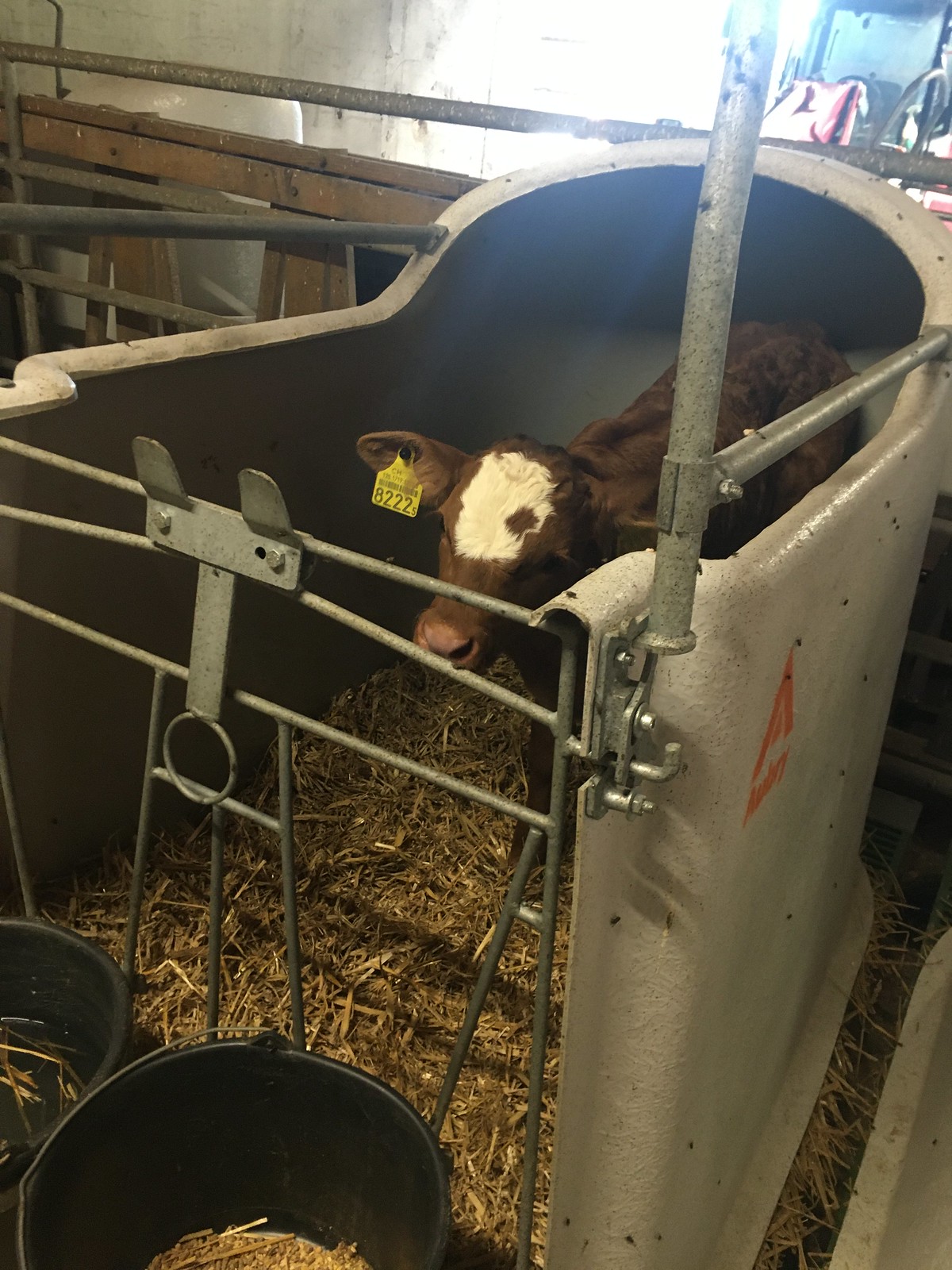
Behind the barn were a few other animal pens. There was a small enclosure for chickens, and a bigger space for peacocks and ducks. There was also a dog, apparently; a sign warned that the farm’s resident dog had a tendency to follow visitors to the point of wandering off, so it was important to bring him back home.



So that was Swiss National Day — super low key, just good food and good company.
A traditional cow parade
The alpine descent, known as désalpe in French and alpabzug in German, is a beloved end-of-summer tradition in Switzerland as well as other German-speaking countries. During the summer, Swiss cows lead an idyllic life in the mountains, grazing and doing cow things. Then, as summer draws to a close, the farmers will lead the cows down from the mountains, through the village, and into the barns to settle down for winter.
This is a lively seasonal affair in the rural towns of Switzerland: the cows are dressed up in flowers and other elaborate gear, the farmers wear traditional Swiss clothing, and children and families cheer them on from the sidelines of the parade. Not to mention all the food and cheese vendors who set up shop along the parade route.
I managed to catch the very last alpine descent weekend this year, at the end of September. Specifically, I attended the parade at Schüpfheim, a small village not far from Lucerne. Clearly hundreds of other people had the same idea: when the train pulled up at the station, everyone poured out from the cars, umbrellas and rain parkas at the ready.


It was drizzling, but the parade organizers were well-prepared. Everyone except the cows was clad in flimsy, transparent rain jackets that didn’t obscure their outfits. The men all wore the same red and black getup, and the women all wore a sort of floral green dress. The cows, though, wore different flowers depending on which farm they belonged to.
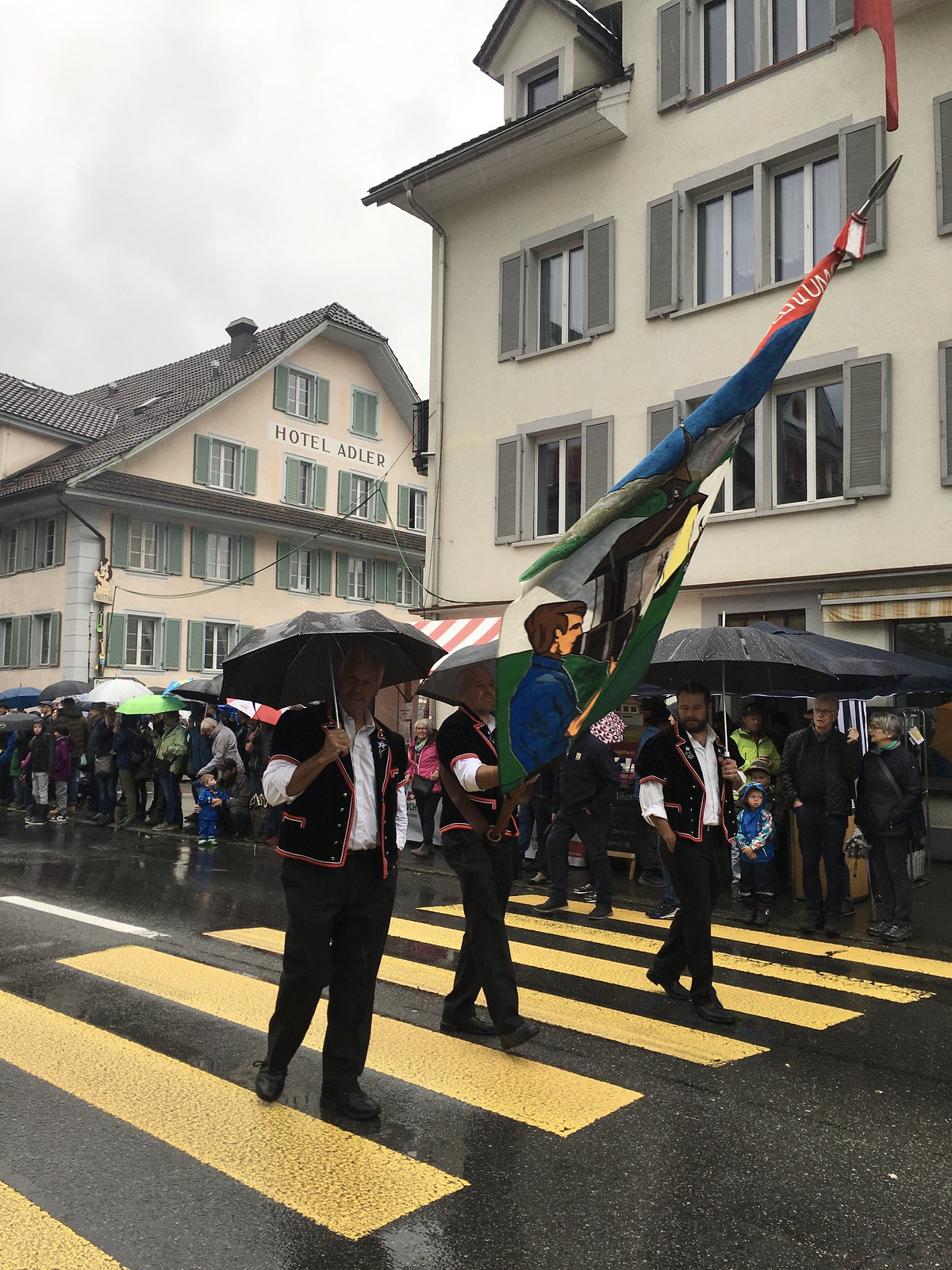
In addition to a band travelling on a truck, there were also yodelers, alphorn players, and a proud display of Entlebucher mountain dogs, which are native to this region.
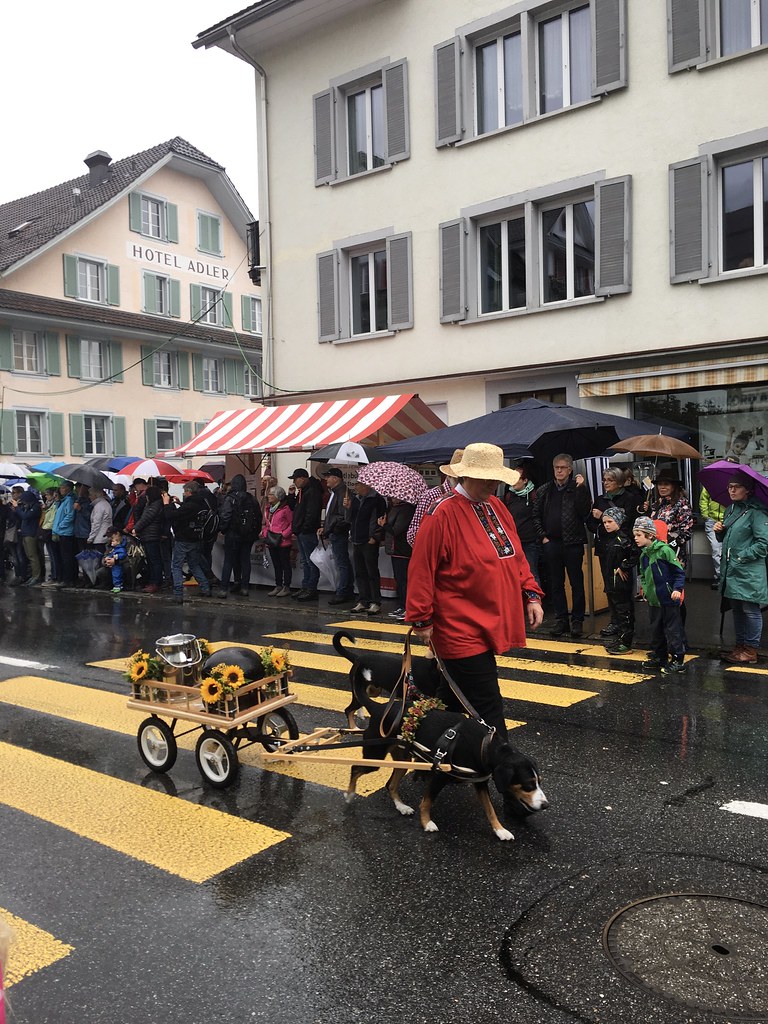

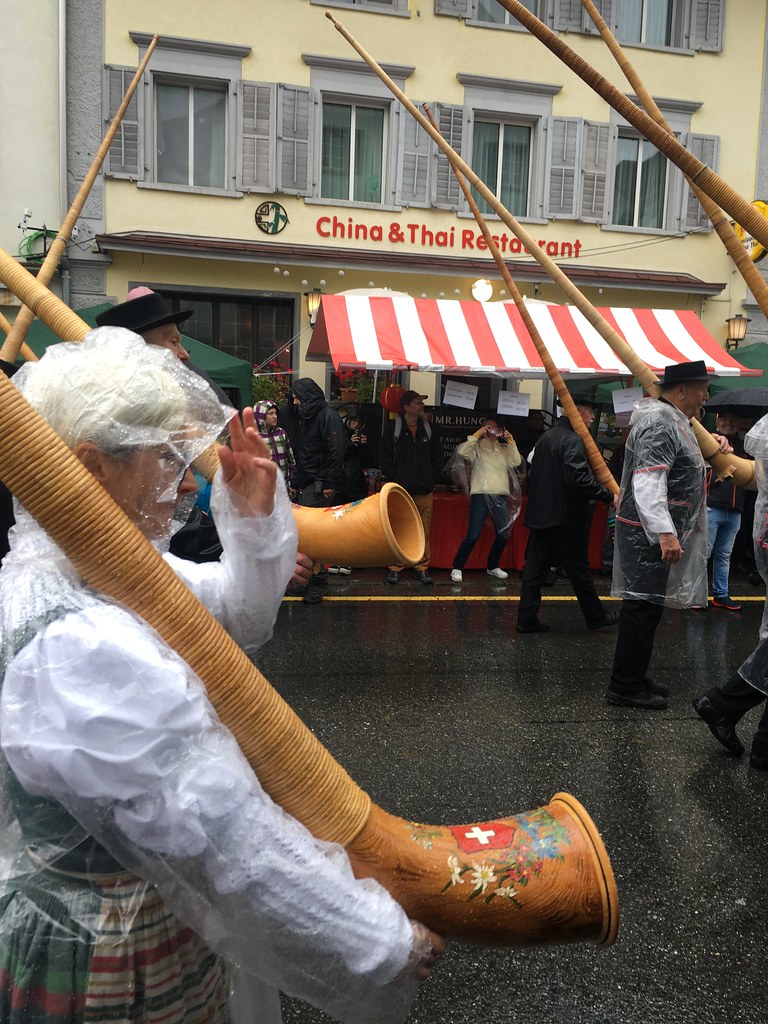
When the cows came, they were LOUD. The cowbells on their necks shook and clanged mightily as they plodded forward, and the sound was deafening.
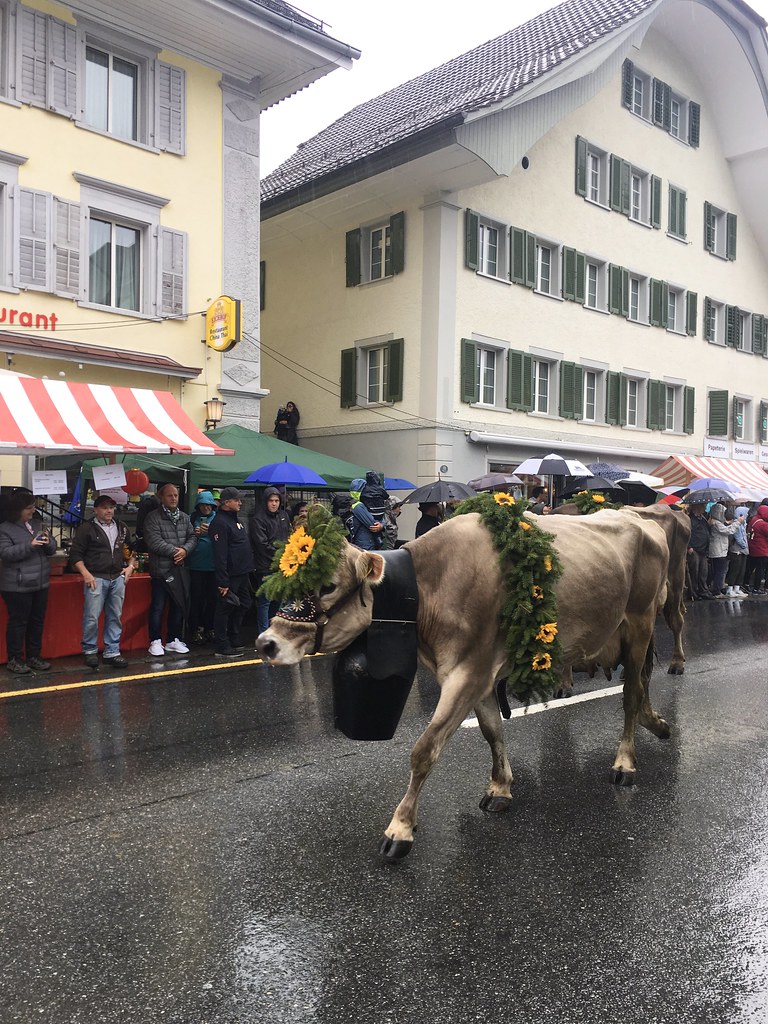
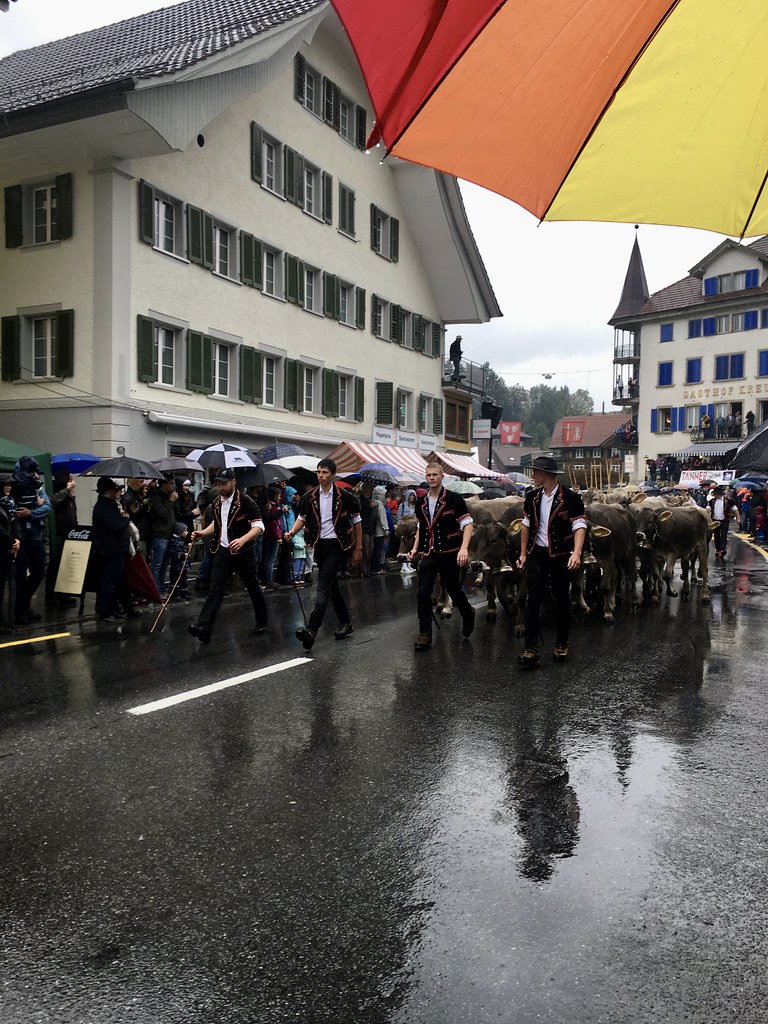
There were supposed to be seven families participating in the parade, but because it was so cold and rainy, I left after the second family passed through. From the train station, I could still see an endless stream of cows coming down from the mountains, and hear the faint ringing of cowbells in the distance.
Once again, I was delighted by how Swiss people seem to find joy in the small things, by their calmness, their sense of community. For anyone visiting Switzerland between August and September, I definitely recommend making time to see one of these parades in person.